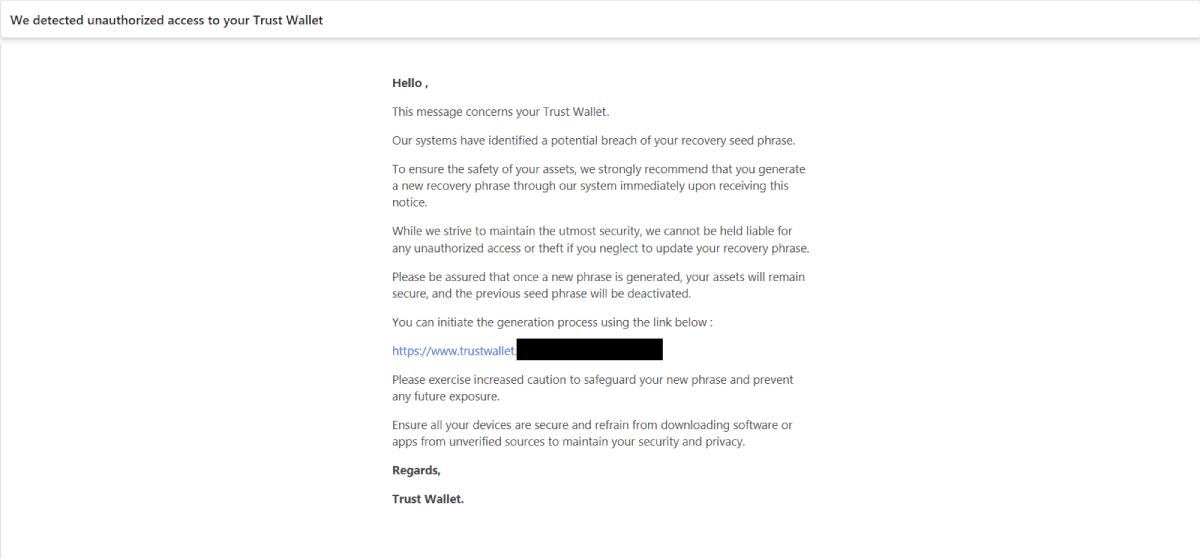
How to Prevent Cryptocurrency Fraud in Your Business
Key takeaways
Cryptocurrency fraud is a growing concern, with over $2 billion lost in 2023 due to scams and security issues.
Common forms of crypto fraud include phishing, wallet-draining scams, and creation of fraudulent accounts.
Centralized exchanges (CEXs) must implement robust identity verification and AML measures to prevent fraud.
Didit offers free, unlimited KYC solutions and optional AML screening to help CEXs combat fraud and comply with regulations.
In January 2024, the U.S. Securities and Exchange Commission (SEC) approved the first Bitcoin ETF. This move drew even more attention from the general public to the world of cryptocurrencies. However, a large part of the retail sector views everything related to cryptocurrencies and blockchain with some hesitation: many scammers find in this technology a way to make easy money and remain in the shadows. According to Coindesk, in 2023, more than $2 billion were lost due to scams, hacks, and other security issues.
If your business is a centralized exchange (CEX), you're considering working with blockchain potential, or you simply want more security in your organization, this article is for you: we'll tell you how you can prevent cryptocurrency fraud in your service.
What is Cryptocurrency Fraud?
To understand what cryptocurrency fraud entails, we must first understand the root of this crime. The origin lies in the characteristics of these digital assets, which make them an ideal breeding ground for scammers to carry out their crimes. The high volatility of this market or the lack of physical backing for digital assets are some of the reasons.
Cryptocurrencies are entirely digital. Except for stablecoins, backed by fiat currency (like USDC or USDT) or other physical assets like gold (XAUT or PAXG), cryptocurrencies lack the protection of having another asset to help control their value.
In addition to the volatility this problem pushes, it means that anyone with a computer can deploy certain techniques (like hacking or phishing) and impersonate someone else on a CEX or centralized exchange.
Documentation created by artificial intelligence helped increase this cryptocurrency fraud at one point. Scammers used fake identifiers to deceive different CEXs, allowing them to operate with apparent normality.
Transactions are irreversible, which also makes cryptocurrency fraud so difficult to eradicate. Thus, if funds are transferred to another wallet, whether by error or malice, the receiver has total control to return them or not.
The anonymity of the blockchain also promotes cryptocurrency fraud. While it's true that all transactions carried out with this technology are public, you can't know who's behind each wallet. Although regulations are becoming stricter, there are still many CEXs without mandatory identity verification (KYC) processes, which makes it truly difficult to know who the real owners of the wallets are.
Therefore, if you want to become a provider of these digital assets or work with blockchain, you must work hard to prevent cryptocurrency fraud, both for your users and for the health of your business. People can lose their assets, but the reputational and financial damage to your company can be even more painful.
Common Forms of Cryptocurrency Fraud
Cryptocurrencies move a lot of money, and that attracts scammers. There are many online fraud techniques that crypto world scammers can use, some directly related to your customers and others to your service. Phishing, investments in fake tokens, or the creation of illegitimate accounts are some of the most common practices.
Phishing
Phishing is one of the most common fraud techniques. It involves a third party impersonating a legitimate service and seeking to capture users' attention. Usually, scammers use alarming messages, such as unusual account activities or regulatory changes, to make users click on a contaminated link.
Once the person clicks on the link, they arrive at a website that looks completely similar to the original service. The fraudulent website requests a series of data, usually related to identification, such as usernames and passwords. By providing them, legitimate accounts are compromised, in the hands of scammers, who can freely access them and do as they please with our account.

Scams Can Drain Your Wallet
Lack of knowledge and education can play tricks in the first steps in the world of cryptocurrencies. Faced with the possibility of making a lot of money in a short time, and without investigating the least bit, many people jump at the first investment opportunity that appears on any social network.
Although these projects may be legitimate and legal, most of them are fake. Their sole objective is to attract users' attention to connect their wallet to seemingly real sites or buy some scam token. Afterward, the funds fly away and the wallets are emptied.
On X (formerly Twitter), these types of scams are common. How to detect them? Usually paid posts, with closed comments or only bot responses.

Creation of Fake Accounts
If services working with cryptocurrencies don't have a solid identity verification solution, or they're not necessary (as in centralized exchanges without KYC), businesses open the door wide to fraud: fake accounts can be a significant problem.
The use of documentation created by artificial intelligence has skyrocketed. Also, synthetic identity, where scammers take real information and mix it with other false data to create seemingly legitimate identities. The problem is that many services are unable to detect these Frankenstein identities.
How Centralized Exchanges (CEXs) Protect Against Cryptocurrency Fraud
As we've seen throughout the article, the characteristics of cryptocurrencies make it very difficult to end identity fraud once the scammer is inside the service: transactions are visible but irreversible, and they reach anonymous identities. That's why it's essential that services working with cryptocurrencies, such as centralized exchanges (CEXs), put the protection barrier against fraud during the onboarding process.
For this, it's essential that companies have a solid identity verification solution, adapted to the unique needs of CEXs, especially in terms of security and regulatory compliance, both for KYC and anti-money laundering (AML).
At Didit, we offer a technological solution capable of helping centralized exchanges end fraud and comply with regulations. As a partner, we propose a completely free, unlimited, and forever identity verification (KYC) solution. Thanks to it, CEXs can comply with all KYC regulations at no cost. Additionally, we offer an optional AML Screening solution so that companies can enjoy a complete and secure suite, allowing them to optimize their operational costs.
Why do we do it? At Didit, we understand that identity verification is a fundamental right, especially in the midst of an era of identity fraud. In this post, we answer all your questions about our service.
If you want to know more about our free identity verification solution, and how we help centralized exchanges comply with regulations, you can contact our team by clicking on the banner below. We'll tell you all about Didit's KYC and AML technology!
